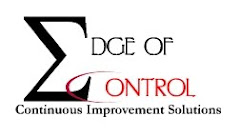Last time I discussed accurate data and how that impacts our reacting to our process outputs. This week we will look at interpreting the story those outputs tell us. Without the right story and context, manufacturing optimization will not occur effectively.
A lot of the time the data comes to us in numbers. Some people can read numbers very well presented in tabular form. Me, I prefer a picture. The best way to see that picture is in a graph. On the Y-axis, we typically put the outputs of our process – kgs produced, hrs uptime, % efficiency etc. On the X-axis is our inputs with time being the most common. If you are trying to decide whether to do an input or time, ask yourself, which changes? If you always have a setting constant, then you don’t want it on your X-axis. Time can be days, hours, minutes, shifts or even batches or lots.
Charts can tell you a lot but only if you have done them correctly. We will focus at this time on run charts, spec charts and control charts. Below are 3 graphs with the identical production information – but each tells a different story.
Figure 1 is a run chart. The shift production rates are plotted against the day and shift. That’s it. Is it good or bad? Who knows. The production rate varies from shift to shift and it looks like some were worse than others but who knows if it was bad?
Figure 1: Run Chart
Figure 2: Spec Chart
The next chart has the production goal laid over top. We will call this a spec chart because often it is not the production goals but the specification limits the customer wants. Now we have some context and can see that some of the production was great, well over the goal but some was bad, well below. But can we expect our process to perform more consistently, with less variation?
Figure 3: Control Chart
Figure 3 removes the production goal and puts what the mean (average) production rate is for the whole time period. It also introduces an Upper Control Limit (UCL) and a Lower Control Limit (LCL). According to those limits, there is so much variation in the process that the probability of having a day with an unplanned production of 0 KLiters is as likely as a day with 150 KLiters of production. Therefore, we should look at our process, not for one-off things to change (ie train Operator B to do CIP properly) but for improvements that go across all shifts, all the time.
Figure 4: Control Chart for Fine Tuned Process (with Production Goal)
Say we managed to fine tune the process and we ended up with Figure 4. Wow, lot less variation but, without any special events occurring, we would never make the production goal. One shift though something happened (special event – ie power outage) and the production really fell off. Another shift though, production was phenomenal, exceeding the control limits AND the Production Goal. Again, this is a special event, so we SHOULD be able to find out what happened differently and see how we can adjust the process to be like that all the time.
Context is critical when looking at data. And that context has to reflect the process itself and its capabilites and not just the goals of the business. The goals will put emphasis, pressure and criticality on the process, but if it cannot fundamentally perform that way, you have to do a complete rethink on what you want.
To put it another way; If you put a bowl of cookies on an 8 ft wall and tell your 6yr old to jump and grab one, they will try again and again and will get closer and closer to it but will never reach it. That is, until they get a ladder, get a taller friend or start throwing things to knock the bowl off. Does your data tell you it is time to get a ladder?
Tuesday, September 21, 2010
Subscribe to:
Post Comments (Atom)









No comments:
Post a Comment